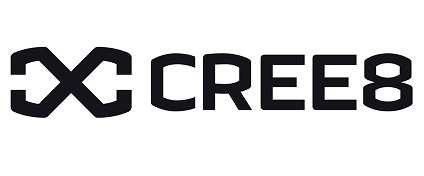Streaming Platforms Acquiring Exclusive Anime Titles: A Strategic Playbook for M&E Executives

Introduction
The battle for global streaming dominance has coalesced into a fierce bidding war over a single, high-value vertical: anime.
For the senior Media & Entertainment (M&E) executive, the strategy is no longer about simply adding popular anime to a catalog; it is about streaming platforms acquiring exclusive anime titles to drive massive subscriber growth, reduce churn, and secure valuable intellectual property (IP).
Once a niche, anime is now a mainstream cultural phenomenon, with over half of Netflix’s global users watching the genre, according to a 2025 report from The Japan Times.
This demographic—young, highly engaged, and prone to merchandise purchasing—is the most valuable audience in modern media.
Securing exclusive anime requires navigating the complex, often opaque Japanese production model, understanding the true cost of exclusivity, and bypassing generalist distributors to deal directly with rights holders.
Table of content
- The Economic Imperative of Acquiring Exclusive Anime Titles
- The Japanese Production Committee Challenge
- A Strategic Framework for Exclusive Anime Acquisition
- Operationalizing the Anime Content Strategy: Three Core Actions
- How Vitrina Solves the Anime Acquisition Problem
- Conclusion: Winning the Anime Content War
- Frequently Asked Questions
Key Takeaways
| Core Challenge | The fragmented “production committee” structure in Japan makes it extremely difficult to identify the true rights holder for international streaming exclusivity and drives up acquisition costs due to fierce competition. |
| Strategic Solution | Implement a content intelligence platform to map all stakeholders in the production committee and provide early warning on projects in development, enabling pre-buy deals before the general market bidding war begins. |
| Vitrina’s Role | Providing verifiable project, company, and executive data to transform the high-risk gamble of anime licensing into a predictable, targeted, and profitable anime content licensing strategy. |
The Economic Imperative of Acquiring Exclusive Anime Titles
The global anime streaming market was valued at $9.5 billion in 2023 and is projected to reach $24.7 billion by 2032, according to Dataintelo. For M&E executives, this market represents a unique opportunity to secure IP that offers long-term benefits far exceeding a traditional licensed movie or series.
The Value Chain of Exclusivity
When streaming platforms acquiring exclusive anime titles, they are not just renting content; they are buying an audience.
- Churn Reduction: Anime titles, particularly long-running serialized ones, are proven “sticky” content that significantly reduces subscriber churn. Dedicated anime fans are less likely to cancel a subscription when key titles are exclusive to the platform.
- IP Ownership vs. Licensing: Platforms like Netflix employ the “Hollywood Model,” fully funding productions (Originals) to secure permanent ownership of the IP. This allows them to create sequels, video games, and merchandise without perpetual renewal fees, turning the content into a franchise engine. Crunchyroll, conversely, utilizes a high-risk simulcast model, investing directly into production committees for near-immediate streaming rights, as highlighted by Outlook Respawn.
- Ancillary Revenue: Anime viewers are significantly more likely to purchase related merchandise than general entertainment viewers, according to a Dentsu report. Exclusive anime IP becomes a launchpad for merchandising, video games, and live events, creating a revenue stream that diversifies the platform’s dependence solely on subscription revenue.
The Rising Cost of Content
The demand for exclusive anime titles has inflated acquisition costs dramatically. Licensing a popular, in-demand anime series for exclusive streaming rights in a major market like North America can cost between $100,000 to over $1,000,000 per season, according to an analysis in a strategic guide from Vitrina.
This makes the accuracy of anime content valuation mission-critical. Overpaying for a series that does not become a global hit, or acquiring rights that are not truly exclusive, can severely undermine the profitability of the acquisition deal.
The Japanese Production Committee Challenge
The fundamental complexity in streaming platforms acquiring exclusive anime titles lies in the unique rights structure of the Japanese industry: the production committee model.
The Multi-Party Rights Structure
Unlike Western content, where rights are often consolidated under one studio or distributor, an anime title is typically co-financed and owned by a “production committee” (seisaku iinkai). This consortium can include the original manga publisher, a TV network, music companies, and toy manufacturers.
- Fragmentation of Control: This committee structure means that international rights for SVOD, theatrical, merchandising, and music are often split between multiple, sometimes competing, entities within the committee. Identifying the single entity that holds the necessary global streaming rights for a particular territory is a significant research burden.
- Territorial Complexity: The rights are carved up into a patchwork of regions, pre-existing deals, and platform-specific licenses. A common pitfall is acquiring what is believed to be “exclusive” content, only to find the exclusivity applies to a narrow geographic region or a specific distribution window. An executive must have full, granular visibility into the deal history of the production committee’s members to ensure the acquired rights are clean.
The Need for Cultural and Business Intermediaries
Successful acquisition is built on trust and cultural understanding. As noted by legal experts, sending a standard “all-rights, all-encompassing US-style rights deal” to a Japanese rights holder is often counterproductive.
- Relationship First: Establishing a long-term relationship, rather than treating the negotiation as a one-off transaction, is essential. The rights holders are entrusting the buyer with valuable IP and a passionate fanbase.
- Due Diligence is Paramount: Before a single contract is drafted, the executive must conduct thorough due diligence on all committee members—their financial health, past deal track record, and verified contact information. Lack of visibility here creates “difficulty finding international distribution partners for niche or regional genres,” a core pain point for M&E leaders.
A Strategic Framework for Exclusive Anime Acquisition
I propose a three-step framework that moves beyond reactive bidding and focuses on proactive, intelligence-led acquisition.
1. Shift from Licensing to Co-Production (The Original IP Play)
The highest-value strategic move is co-production or outright funding of an original anime series. This secures exclusive anime IP from inception.
- Target the Creators: The focus shifts from acquiring a finished title to identifying top-tier Japanese animation studios (e.g., MAPPA, Mir, Wit Studio) and key creative talent (directors, writers) that align with the platform’s content thesis.
- The Investment Thesis: Co-funding allows the platform to control global rights, maximize localization (dubbing and subtitling in multiple languages, a crucial driver of global growth), and manage the full IP lifecycle, from streaming to merchandising.
2. Master the Simulcast Window (The Engagement Play)
For platforms like Crunchyroll, and increasingly others, securing the anime simulcast deals (episodes streaming hours after they air in Japan) is non-negotiable for fan engagement.
- Speed and Access: This strategy requires extreme speed and intelligence. The platform needs an early warning on upcoming film/TV projects—knowing which studios are producing which titles and their expected broadcast window before the show is heavily marketed. This knowledge drastically improves the negotiation position.
- Verified Contact Outreach: Once a key title is identified, the acquisition team must bypass the general contact form and reach the verified executive decision-maker within the production committee, ensuring efficient, high-confidence outreach.
Operationalizing the Anime Content Strategy: Three Core Actions
A successful anime content licensing strategy must be operationalized through precision-focused technology.
Action 1: Systematically Track Projects from Development
Waiting for an anime to premiere is a tactical failure. Strategic success is achieved by tracking projects in the development and pre-production stages.
- The Project Tracker: Executives must utilize a project tracker that monitors new anime projects globally, filtering by genre, studio involvement, and expected release window. This is the only way to secure a pre-buy or co-production deal when the competition is minimal.
- Track the Money: Monitor the financiers and co-producers attached to the project. Knowing the structure of the Japanese production committee allows the platform to identify potential rights holders and assess the project’s budget and scale before negotiation.
Action 2: De-Risk the Partnership Through Data
Licensing from international partners inherently involves risk. This risk must be mitigated with objective, verifiable data.
- Partner Track Record: Use a platform to instantly audit the deal history and financial reputation of any potential Japanese studio or sub-licensor. This avoids the pitfall of “incomplete visibility into comp…” (partner track record) and ensures the partner can deliver on the agreement.
- Localization Vetting: Given the high demand for high-quality dubs, the acquisition strategy must integrate vendor vetting. The platform must be able to verify that the localization partner proposed by the licensor has a track record of delivering high-quality, genre-appropriate dubbing services.
Action 3: Maximize Localization and Global Reach
The global success of streaming platforms acquiring exclusive anime titles hinges on superior localization.
- The Localization Advantage: Streaming platforms must invest aggressively in quality dubbing, subtitles, and cultural adaptation. According to a market report, demand for high-quality dubbed anime is a significant growth driver in North America and Europe. This is a crucial element of the deal that must be budgeted for and managed meticulously. You can streamline your localization process and find global vendors here.
How Vitrina Solves the Anime Acquisition Problem
Vitrina provides the verified intelligence platform designed to eliminate the data fragmentation and risk associated with securing exclusive anime titles. We turn the opaque Japanese production committee model into a transparent, actionable data set.
- Project Tracking & Early Warning: Our Film & TV Project Tracker monitors the global M&E supply chain, providing executives with an early warning system for new anime projects in development and pre-production. This allows platforms to enter negotiations 6-18 months ahead of the general market.
- Verified Executive and Company Data: We provide verified profiles for over 3 million executives and 100,000 companies, including all key decision-makers at Japanese studios, publishers, and rights holders. This directly solves the problem of not having a centralized source of verified contacts for outreach.
- End-to-End Supply Chain Vetting: From the original manga publisher to the final dubbing studio, Vitrina allows you to verify the entire supply chain involved in an anime title, ensuring due diligence, protecting your investment, and strengthening your anime content valuation strategy.
Vitrina is the essential strategic tool for executives whose success depends on securing high-value, exclusive IP in the hyper-competitive global anime vertical.
Conclusion: Winning the Anime Content War
The market for streaming platforms acquiring exclusive anime titles is defined by two factors: the intensity of the competition and the complexity of the Japanese rights structure.
Success requires moving past opportunistic licensing and adopting a strategic approach rooted in high-fidelity data.
By using intelligence to gain an early-warning advantage on new projects, verify the track record of every member of the production committee, and secure true exclusivity, M&E executives can transform anime from an expense into the most powerful driver of subscriber retention and franchise revenue in their portfolio.
Frequently Asked Questions
The production committee model is a consortium of companies (publisher, TV network, etc.) that co-finance and co-own an anime title. It is complex for platforms because rights are fragmented across these multiple parties, making it difficult to identify the sole decision-maker for international streaming exclusivity.
Platforms invest in Originals to secure complete, permanent ownership of the intellectual property (IP). This allows them to avoid perpetual licensing renewal fees, control global distribution and localization, and maximize revenue from merchandise, sequels, and other ancillary businesses.
Primary cost drivers are the demand for exclusivity, the size of the territory (global rights are most expensive), and the content’s popularity. The fierce competition among major global platforms like Netflix, Crunchyroll, and Amazon Prime Video also drives up the per-season acquisition price significantly.
A simulcast deal grants streaming rights for new episodes to be released on a platform within hours of their original broadcast in Japan. This is critical for fan engagement and reducing piracy, as it allows platforms to cater immediately to the core, highly dedicated anime audience.

























